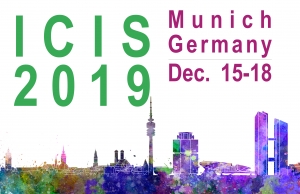The year 2019 marks the 50th anniversary of the birth of the Internet. As the Internet grows and evolves, our world has become increasingly interconnected. It started with the connections among computers, followed by those of mobile phones, and increasingly by other digital devices and objects to constitute the “Internet of Things,” linking people, groups, and organizations, and bridging communities, nations, and societies. These interconnected resources, actors, and their actions have spawned numerous innovative technologies, applications, products, and services. The relationships among the interconnected resources and actors mimic the interdependent and coevolving species in an ecological system. Therefore, the sets of interconnected entities involved in developing and utilizing innovations are often called “innovation ecosystems.”
There are different types of innovation ecosystems. Firms like Amazon, Facebook, Google, and Apple cultivate their own ecosystems consisting of app developers, accessory makers, content providers, and end users, all innovating with these firms’ respective foundational products or technologies, as platforms. Others, including nonprofits, companies, academic institutions, government agencies, and so on, are interacting with each other to develop and spread innovations in specific product/service categories, sectors, or geographical regions (such as in the ecosystems for cloud computing, healthcare, or the Silicon Valley, respectively).
Regardless of their different emphases and scopes, all innovation ecosystems share the same heart – Information Systems (IS) powered by digital technologies. IS are essential to all innovation ecosystems not only because IS collect, process, and archive data and information as indispensable “nutrients nourishing” the members of the ecosystems, but also because IS can vastly reduce the cost of coordination among interdependent entities in the ecosystems. Most importantly, the very innovation in each ecosystem is enabled by IS. Without digital technologies, business processes, and the developers and operators that comprise IS in Twitter or Uber, for instance, innovative social media or ride-hailing services that these companies offer respectively would not have been possible.
From this premise, important questions arise at the nexus between IS and innovation ecosystems. Foremost, while natural ecosystems are confined by geographical boundaries, innovation ecosystems enabled by digital technologies do not have clearly defined boundaries, presenting challenges for both practice and theorization. What does membership of an innovation ecosystem entail? How to properly define the fuzzy and dynamic boundaries of an innovation ecosystem? Second, diverse entities such as resources, actors, and artifacts coexist in an innovation ecosystem and these entities interact through different processes. How to monitor and measure the changes in the structure of an innovation ecosystem? What structure of an innovation ecosystem is efficient? Should IS architecture and ecosystem structure be aligned for optimal system performance? Third, what are the performance criteria of an innovation ecosystem and how to measure performance? How can IS help monitor and enhance ecosystem performance? Lastly, in order to achieve optimal performance, an innovation ecosystem must be healthy, internally maintaining member contributions and system services in equilibrium, and externally buffering against changes in the environment. What internal and external factors influence the health of an innovation ecosystem? How can IS moderate such influences or shape the ecosystem’s health? Many other questions about the relationship between IS and innovation ecosystems remain underexplored or unanswered.
Track Chairs
Stefan Henningsson
Eric T.K. Lim
Ping Wang
Subscribe to RSS Feed (Opens in New Window)
|
Becoming Ready for Internationalization: The Role of Platformization in the LEGO Group Robert Lorenz Törmer, Copenhagen Business School |
|
|
Juan Giraldo-Mora, Copenhagen Business School |
|
|
Fabian Nischak, University of Göttingen |
|
|
Mario Müller, University of Cologne |
|
|
Growth, Complexity, and Generativity of Digital Platforms: The Case of Otto.de Daniel Fuerstenau, Freie Universität Berlin |
|
|
Hardware-layer Dynamics in Mobile Platform Ecosystems: The Case of Apple’s iPhone Aftermarket Roman Zeiss, University of Cologne |
|
|
Bingqing Xiong, University of Science and Technology of China |
|
|
Mario Schaarschmidt, University of Koblenz-Landau |
|
|
Platform Coring in the Browser Domain - An Exploratory Study Benedict Bender, University of Potsdam |
|
|
Taming Rivalry: Reciprocity in Governing Digital Semi-Commons George Kuk, Nottingham Trent University |
|
|
Tensions in Digital Platform Business Models: A Literature Review Tobias Mini, University of Passau |
|
|
Dan LUO, City University of Hong Kong |
|
|
The Impact of Platform Entry Strategies on the Quality of Complements in Multihoming Chengcheng Kang, University of Warwick |
|
|
The Influence of Digital Affordances and Generativity on Digital Platform Leadership Andreas Hein, Technical University of Munich |
|
|
Towards Open Production: Designing a marketplace for 3D-printing capacities Nikolai Stein, Julius-Maximilians-University |


